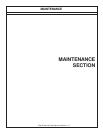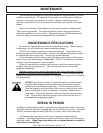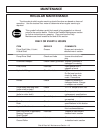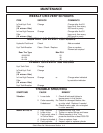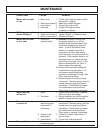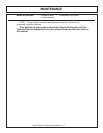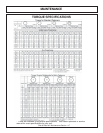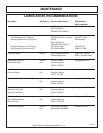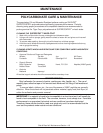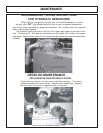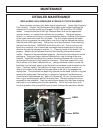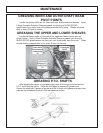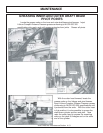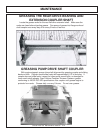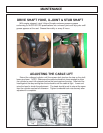
Side & Rear flail Maintenance Section 4-9
MAINTENANCE
POLYCARBONATE CARE & MAINTENANCE
The proprietary UV and Abrasion Resistant surface coating on SHIELDS
®
SUPERCOATED
™
polycarbonate significantly improves performance. Periodic
cleaning using proper procedures and compatible cleaners are recommended to
prolong service life. Tiger Corp. polycarbonate is SUPERCOATED
™
on both sides.
CLEANING THE SUPERCOAT™ HARD-COAT
1. Wash with a mild solution of soap or detergent and lukewarm water.
2. Using a soft cloth or sponge, gently wash the sheet to loosen dirt and grime and rinse well
with clean water.
3. To prevent water spotting, thoroughly dry with chamois or cellulose sponge.
4. Avoid the use of abrasive cleaners, squeegees and/or other cleaning implements that may
mar or gouge the coating.
CLEANING AGENTS WHICH HAVE BEEN FOUND TO BE COMPATIBLE UNDER LABORATORY
CONDITIONS:
• Aqueous Solutions of Soaps and Detergents
Windex
1
Top Job
2
Joy
2
Mr. Clean
2
Fantastik
3
Formula 409
4
Sumalight D12 Brucodecid
• Organic Solvents
Butyl Cellosolve Kerosene Hexel, F.O. 554 Naphtha (VM&P grade)
Neleco-Placer Turco 5042
• Alcohols
Methanol Isopropyl
All residual organic solvents should be removed with a secondary rinse.
GRAFFITI REMOVAL
Butyl cellosolve (for removal of paints, marking pen inks, lipstick, etc.). The use of
masking tape, adhesive tape or lint removal tools works well for lifting off old weathered
paints.
To remove labels, stickers, etc., the use of kerosene or VM&P naphtha are generally
effective. When the solvent will not penetrate sticker material, apply heat (hair dryer) to
soften the adhesive and promote removal.
IMPORTANT: If a material is found to be incompatible in a short-term test, it will usually be
found to be incompatible in the field. The converse, however, is not always true. Favorable
performance is no guarantee that actual end-use conditions have been duplicated.
Therefore, these results should be used as a guide only and it is recommended that the
user test the products under actual end-use conditions.



